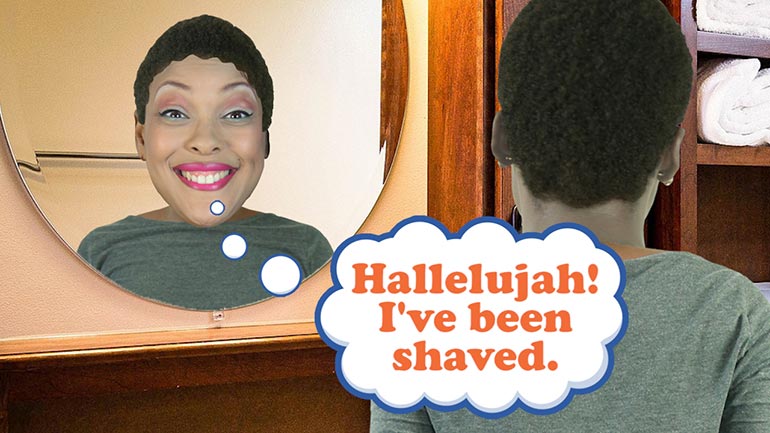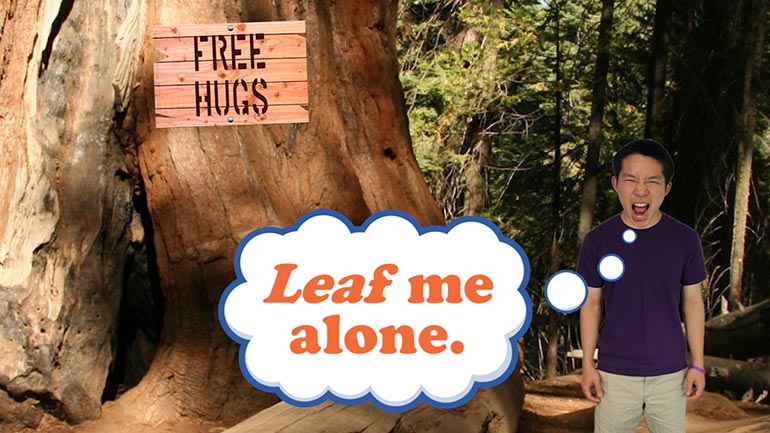ShmoopTube
Where Monty Python meets your 10th grade teacher.
Search Thousands of Shmoop Videos
Science 4: Parts of a wave 15 Views
Share It!
Description:
Well, lets see. There's the part where you wave, then there's the part where your friend sees you and comes over and says hi. We're not sure what else there is, but luckily we've got a video here to tell us the rest.
Transcript
- 00:04
[Dino and Coop singing]
- 00:13
So here's today's million-dollar question: what are the parts of a wave? [Quiz with 3 people at podiums]
- 00:17
And if you know the answer, we're not giving you a million dollars. [Girl with dollar signs in her eyes]
- 00:20
Sorry, that was super misleading.
- 00:21
Anyway, if we look at a wave, it seems pretty simple: just a long, wobbly line. [Wave is drawn out]
Full Transcript
- 00:26
So…does it even have any parts?
- 00:28
You betcha.
- 00:29
Let's dig a bit deeper and dissect a transverse wave to see all of its different parts. [Wave about to be dissected]
- 00:33
Often when we see an image of a wave, we also see a long, straight line running through
- 00:37
its middle.
- 00:38
Why?
- 00:39
Well, it's there to show what the wave would look like if there wasn't a disturbance moving [Wave becomes flat as the disturbance is removed]
- 00:42
through it.
- 00:43
This rest position of the wave is called the equilibrium.
- 00:45
Because "wave sleepy-time position" seemed a little too informal. [Wave with z's coming from it]
- 00:49
So let's check out this point on our wave, located at the equilibrium.
- 00:52
If we watch it, it goes up, up, and up… [Wave begins to be shown]
- 00:55
…until it starts to come back down again.
- 00:56
Kind of like a rollercoaster ride…if that rollercoaster was a dumb image and just a [People going down the peak of a rollercoaster]
- 01:00
huge disappointment in general. [The rollercoaster screeches to a stop]
- 01:01
Anyway, that highest point the wave reaches is called the crest.
- 01:05
Now that we know all about a wave's equilibrium and crest, we can put these two parts together
- 01:09
to find another part of the wave.
- 01:11
If we trace a straight, vertical line between the two, we find the wave's amplitude, which
- 01:16
is the distance between a wave's crest and its equilibrium. [Coop pointing at a blackboard]
- 01:19
And last but not least, we need to be able to talk about the speed of waves.
- 01:23
To do that we talk about frequency, aka the number of times a wave's wave pattern repeats [Guy shoots a starting gun and the waves fly off]
- 01:28
in a given amount of time. [Dino pointing at a blackboard]
- 01:29
We measure frequencies in hertz, which are the number of waves that pass through a point [Coop pointing at a blackboard]
- 01:33
in one second.
- 01:35
To test out our understanding of these concepts, let's see how quick this guy is.
- 01:39
Put one second on the clock and…
- 01:40
Go!
- 01:41
Looks like this wave managed to repeat its wave pattern twice in one second, giving it [The wave's speed is measured]
- 01:46
a frequency of two hertz, which isn't too bad.
- 01:48
We just hope you weren't betting on twenty or more. [Crowd cheers the guy who was right]
- 01:51
Seriously, we're not going to pay you anything.
- 01:53
Get that out of your head. [Guy looks disappointed]
Up Next
Sticks and stones, right? Well...only sometimes. It's a good idea to make sure your words aren't going to hurt others. Let's look at some ways to d...
Related Videos
Learn to debate like a champ. It's way better than debating like a chimp. That just takes mudslinging to a whole new level.
Today we'll learn about biographies and autobiographies. And no, the second one has nothing to do with the lives of cars.
In this lesson we'll subject you to some verbs and predicates. Each one is a necessary part of a complete breakfas—er...sentence.
Choosing words carefully is important. You may end up vexing the assemblage of citizens you're conversing with...or you might even just plain bore...




